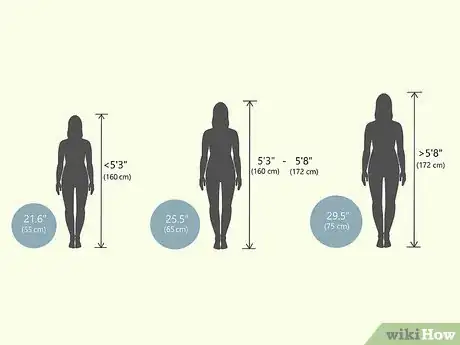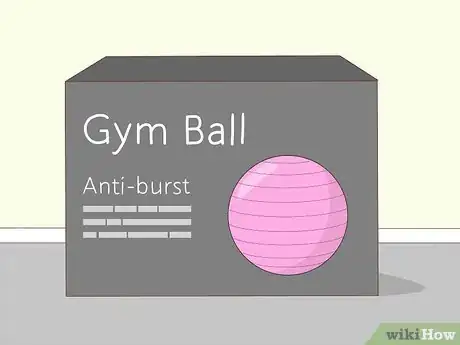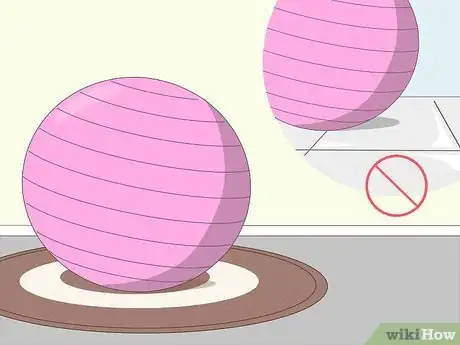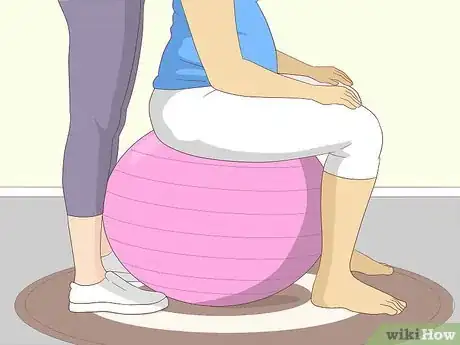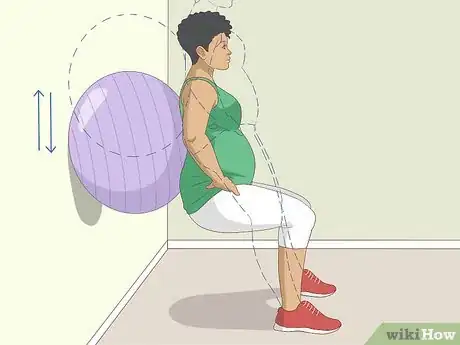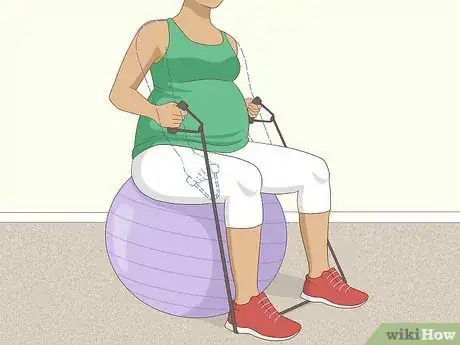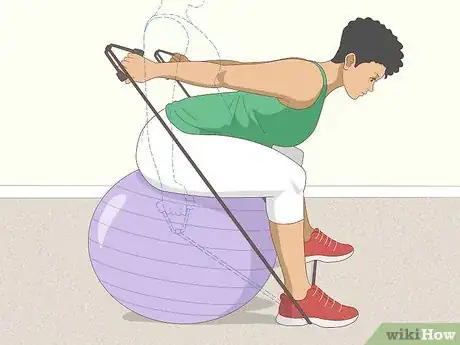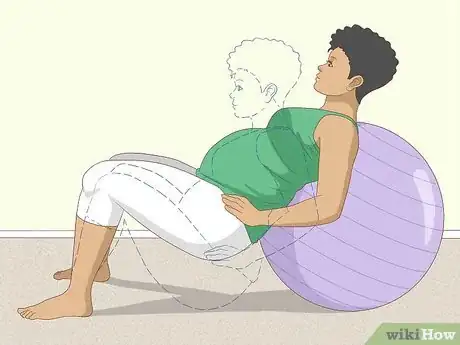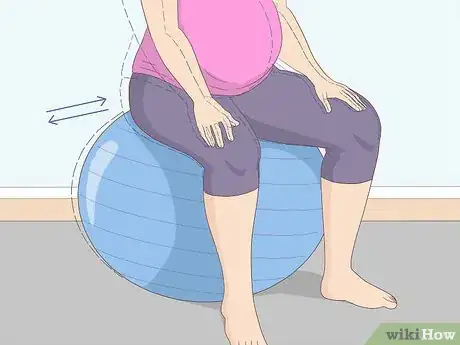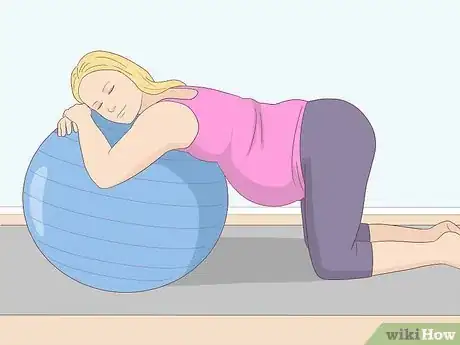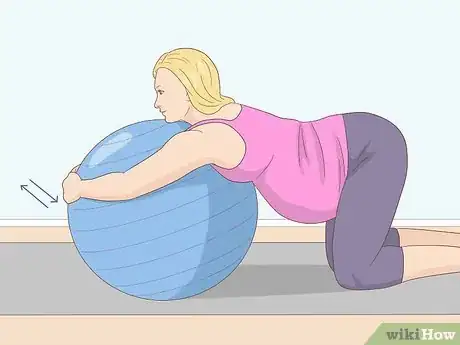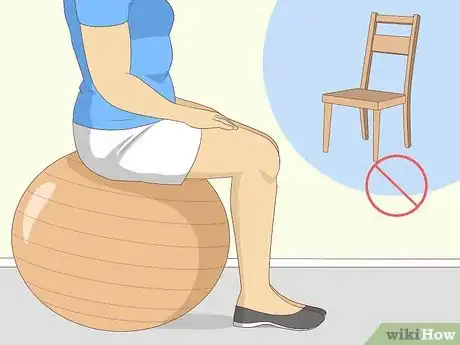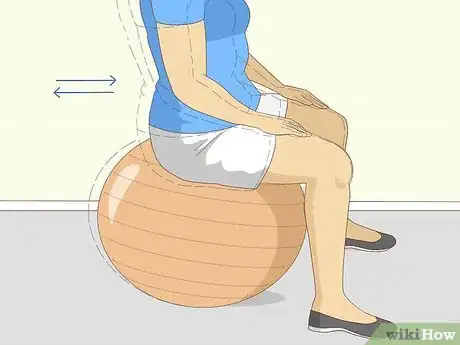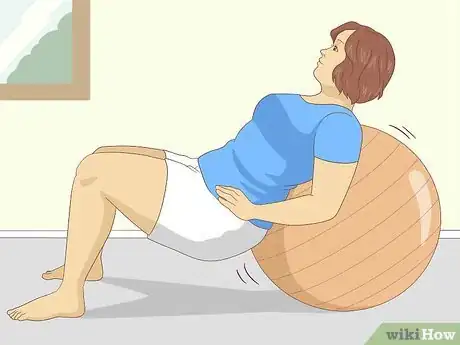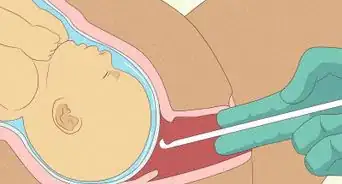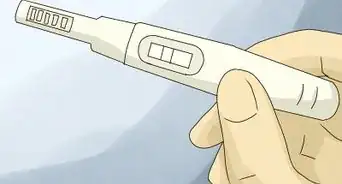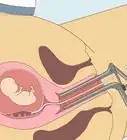This article was co-authored by Wendy Powell and by wikiHow staff writer, Hannah Madden. Wendy Powell is a Maternal Health and Exercise Specialist and the Founder and CEO of MUTU System, the world's best-selling, medically recommended online fitness education program for mothers. Wendy specializes in pregnancy, post-baby recovery, postpartum exercises, fitness education, and body confidence. Wendy works to shift the conversation on women's bodies towards equality and empowerment for health, confidence, and power. She is a published author, international speaker, and award-winning entrepreneur. Wendy is on the Women's Development Board of the MicroLoan Foundation and is a frequent contributor to the BBC. MUTU System has been featured in Vogue, the Huffington Post, Fox News Health, Daily Mail, and The Guardian, and is recommended by Hollywood Trainer, Jeanette Jenkins.
There are 11 references cited in this article, which can be found at the bottom of the page.
This article has been viewed 230,212 times.
Exercising with a gym ball while you’re pregnant can help you strengthen your pelvic floor, and it’s an easy way to keep your fitness level up while you wait for childbirth. Similarly, using your gym ball after you give birth can ease you into exercising again so you don’t overdo it. If you’ve checked with your doctor and they’ve given you the okay to start exercising, try out some of these gym ball techniques during your pregnancy and after.
Steps
Safety
-
1Get the right gym ball for your height. This is important to make sure you have correct posture for your exercises. If you get a gym ball that’s too big, your feet might dangle; too small, and you could be hunched into an awkward position.[1]
- Under 5’3” (160 cm): get a ball that inflates to around 21.6 in (55 cm).
- Between 5’3” (160 cm) and 5’8” (172 cm): get a ball that inflates to 25.5 in (65 cm).
- Over 5’8” (172 cm): get a ball that inflates to 29.5 in (75 cm).
-
2Make sure the ball is burst-resistant. Sitting down on a gym ball that pops can really hurt you or the people around you. When you’re buying a gym ball, make sure it’s labeled with “anti-burst” or “burst-resistant.”
- If you’re buying a ball specifically for pregnancy, it should be anti-burst automatically.
- You can also double check the weight limit to make sure the ball is the right size for you.
Advertisement -
3Inflate the ball so it’s firm with a little give. If your ball is over inflated, it could pop. If it’s under inflated, it won’t give you as much benefit. Fill it up with the pump that comes with it until you can poke it just slightly.[2]
- If you’re unsure about your inflation, check the manufacturer’s instructions.
- Usually, inflating the ball to about 70% of its size is perfect.
-
4Place your ball on a carpeted floor for stability. Smooth floors, like tile and wood, can be slippery, and your gym ball could slide around. When you’re first starting out, put your ball on a carpet or a rug to give it a little bit of stability.[3]
- You should also make sure there aren’t any large objects nearby that you could hurt yourself on. Cabinets and tables can be a hazard if you fall backwards or to the side.
-
5Use a spotter when you’re first getting on the ball. Place the ball on the ground and have someone stand behind it. Slowly lower yourself down, using the person behind you to steady yourself and the ball so it doesn’t wiggle around. When you’re comfortable, you can have the person behind you move away, but keep them nearby in case you start to tip over.[4]
- Once you get the hang of getting on and off the ball, you don’t need to use a spotter anymore.
Pregnancy Exercises
-
1Rock back and forth for a mini workout. Sit on the ball with your back straight and your knees spread apart. Gently rock back and forth and side to side to work out your abs and your obliques. You can also bounce on the ball gently to get a workout in your lower back.
- This is a great workout to start out with since it’s so mild. You can do this during any trimester as long as your doctor gives you the okay.
- Just balancing yourself as you sit on the ball will help strengthen your core.[5]
-
2Squat with the ball behind you to exercise your legs. Stand with your feet shoulder-width apart and press the ball in between your back and the wall. Slide down the wall until your knees are at a 90-degree angle from the floor, then return to a standing position.[6]
- Start slow, and try to work up to 10 repetitions.
- If you’re worried about losing your balance, have someone stand next to you to grab onto just in case.
- If you’re in your second or third trimester and you’re having persistent bleeding or placenta problems, stick to rocking back and forth on the ball instead of heavier exercises.[7]
-
3Sit on the ball and row with a resistance band for an arm workout. Sit up straight on the ball with your feet shoulder-width apart. Put a resistance band underneath each foot, and use the arch of your feet to keep it in place on the floor. Hold onto each end of the band and pull straight back, like you’re rowing, then return to the position you started in.[8]
- You’ll feel this in your shoulder blades as you pull backwards.
- Try to do at least 15 repetitions at one time.
- Make sure the band stays underneath your feet! If it flies toward you, you could really hurt yourself.
-
4Use a resistance band to deadlift on the ball for a chest workout. Sit on the ball with your back straight and your feet about hip-width apart. Secure your resistance band underneath your feet and keep it in place the whole exercise. Grab the ends of the resistance band and lean your torso forward, bringing your chest toward your thighs. Sit back up into your starting position to complete 1 rep.[9]
- Try to work up to doing 15 reps at a time.
- If you want an added challenge, wrap the band around your hands for extra resistance.
-
5Stretch your back using the gym ball. Start on your knees and place the ball in front of you, then hold it with both hands. Slowly bring your rear down to your heels, then hold the pose for a few seconds before coming back up.[10]
- You can do up to 10 repetitions of this exercise.
-
6Try a pelvic tilt with your gym ball to stretch your pelvis area. Sit on the floor with your back leaning against the ball and your feet on the ground (keeping your knees bent). Place your hands on your hips and push the small of your back upwards, rocking your hips up toward the sky. Hold this pose for a few seconds, then sit back down to complete 1 repetition.[11]
- Try to work up to 10 repetitions of this stretch.
- If you’re worried about losing your balance, have someone stand nearby to catch you.
During Labor
-
1Sit on the ball and rock from side to side for a gentle pain reliever. Much like you did during pregnancy, you can sit on the ball with your knees spread apart and rock your pelvis front to back and side to side. This can help with contraction pain and the discomfort of labor when it first starts.
- Have your partner or a friend stand behind you and rub your back or your shoulders while you rock if you’d like some extra comfort.
-
2Kneel on the floor and cradle the ball to help with pain. Put your knees on the floor and set the ball in front of you, then wrap your arms around the top portion of the ball. Lean forward so your cheek is resting on the top of the ball to stretch out your pelvis muscles and relieve some of your labor pain.[12]
- You can also hold this position while kneeling next to a bed or a chair.
- It’s best to practice these positions at home before you go into labor so you know how to do them when the time comes.
-
3Hug your ball and rock from side to side on your knees for extra comfort. Get into the same position with your knees on the floor and your ball in front of you. Lean your torso on top of the ball and let your arms hang to the side like you’re giving the ball a hug, then rock your hips from side to side.[13]
- You can rock in the rhythm of your contractions to help with the pain and discomfort.
After Childbirth
-
1Sit on the ball instead of a chair for extra comfort.[14] After you give birth, it may be slightly uncomfortable to sit on a hard chair. Instead, use your gym ball to sit down at the table or in front of the TV as you recover.
- Sitting on the ball will also help take the pressure off any stitches.
- If you’re breastfeeding, sitting on the ball can help you keep your posture better than sitting on a couch or sofa.
-
2Strengthen your pelvic floor muscles by rocking back and forth. Much like you did during pregnancy, you can use your gym ball to strengthen your torso. Sit on the ball with your knees wide and your posture straight. Rock back and forth and side to side to give your body a simple, light workout.[15]
- You might not have the energy to exercise right after childbirth, which is totally fine. Wait until you and your doctor both think you’re up for it before trying to work out.
-
3Hold your baby and rock them gently on the gym ball. If you’re having trouble getting your baby to calm down, sit on the ball and cradle your baby gently in your arms. Slowly rock back and forth to calm your baby down and rock them back to sleep.
- Make sure you have a good balance on the ball before trying to hold your baby while sitting on it.
- If you’re worried about falling over, have someone nearby to help you just in case.
-
4Repeat the same exercises you did in pregnancy when you feel up to it. As you recover from childbirth, you may be able to start exercising as soon as a few days after your labor. If you feel okay (and your doctor says it’s okay) you can try the same exercises you did during pregnancy to strengthen your abdominals as you recuperate.[16]
- If you ever feel any pain, dizziness, or nausea, stop exercising.
- Exercising can lift your mood and help you recover from childbirth faster.
Expert Q&A
Did you know you can get expert answers for this article?
Unlock expert answers by supporting wikiHow
-
QuestionWill a gym ball be helpful after I give birth?
 Wendy PowellWendy Powell is a Maternal Health and Exercise Specialist and the Founder and CEO of MUTU System, the world's best-selling, medically recommended online fitness education program for mothers. Wendy specializes in pregnancy, post-baby recovery, postpartum exercises, fitness education, and body confidence. Wendy works to shift the conversation on women's bodies towards equality and empowerment for health, confidence, and power. She is a published author, international speaker, and award-winning entrepreneur. Wendy is on the Women's Development Board of the MicroLoan Foundation and is a frequent contributor to the BBC. MUTU System has been featured in Vogue, the Huffington Post, Fox News Health, Daily Mail, and The Guardian, and is recommended by Hollywood Trainer, Jeanette Jenkins.
Wendy PowellWendy Powell is a Maternal Health and Exercise Specialist and the Founder and CEO of MUTU System, the world's best-selling, medically recommended online fitness education program for mothers. Wendy specializes in pregnancy, post-baby recovery, postpartum exercises, fitness education, and body confidence. Wendy works to shift the conversation on women's bodies towards equality and empowerment for health, confidence, and power. She is a published author, international speaker, and award-winning entrepreneur. Wendy is on the Women's Development Board of the MicroLoan Foundation and is a frequent contributor to the BBC. MUTU System has been featured in Vogue, the Huffington Post, Fox News Health, Daily Mail, and The Guardian, and is recommended by Hollywood Trainer, Jeanette Jenkins.
Maternal Health & Exercise Specialist
Warnings
- Check with your GP before beginning an exercise routine in pregnancy, especially if you have not been exercising before.⧼thumbs_response⧽
- Never push your body more than it is comfortable with, especially during the latter stages of pregnancy.⧼thumbs_response⧽
- Always get up slowly and carefully from floor work, to give your body time to adjust and to prevent fainting.⧼thumbs_response⧽
References
- ↑ https://www.pelvicexercises.com.au/exercise-ball/
- ↑ https://www.babycentre.co.uk/a1048463/using-a-birthing-ball
- ↑ https://www.babycentre.co.uk/a1048463/using-a-birthing-ball
- ↑ https://www.babycentre.co.uk/a1048463/using-a-birthing-ball
- ↑ Wendy Powell. Maternal Health & Exercise Specialist. Expert Interview. 24 September 2020.
- ↑ https://www.mayoclinic.org/healthy-lifestyle/pregnancy-week-by-week/multimedia/pregnancy-exercises/sls-20076779?s=2
- ↑ https://www.mayoclinic.org/healthy-lifestyle/pregnancy-week-by-week/in-depth/pregnancy-and-exercise/art-20046896
- ↑ https://www.mayoclinic.org/healthy-lifestyle/pregnancy-week-by-week/multimedia/pregnancy-exercises/sls-20076779?s=9
- ↑ https://www.mayoclinic.org/healthy-lifestyle/pregnancy-week-by-week/multimedia/pregnancy-exercises/sls-20076779?s=10
- ↑ https://www.mayoclinic.org/healthy-lifestyle/pregnancy-week-by-week/multimedia/pregnancy/sls-20076930?s=3
- ↑ https://www.mayoclinic.org/healthy-lifestyle/pregnancy-week-by-week/multimedia/pregnancy/sls-20076930?s=5
- ↑ https://www.mayoclinic.org/healthy-lifestyle/labor-and-delivery/multimedia/labor/sls-20077009?s=6
- ↑ https://www.babycentre.co.uk/a1048463/using-a-birthing-ball
- ↑ Wendy Powell. Maternal Health & Exercise Specialist. Expert Interview. 24 September 2020.
- ↑ https://www.babycentre.co.uk/a1048463/using-a-birthing-ball
- ↑ https://www.mayoclinic.org/healthy-lifestyle/labor-and-delivery/in-depth/exercise-after-pregnancy/art-20044596
